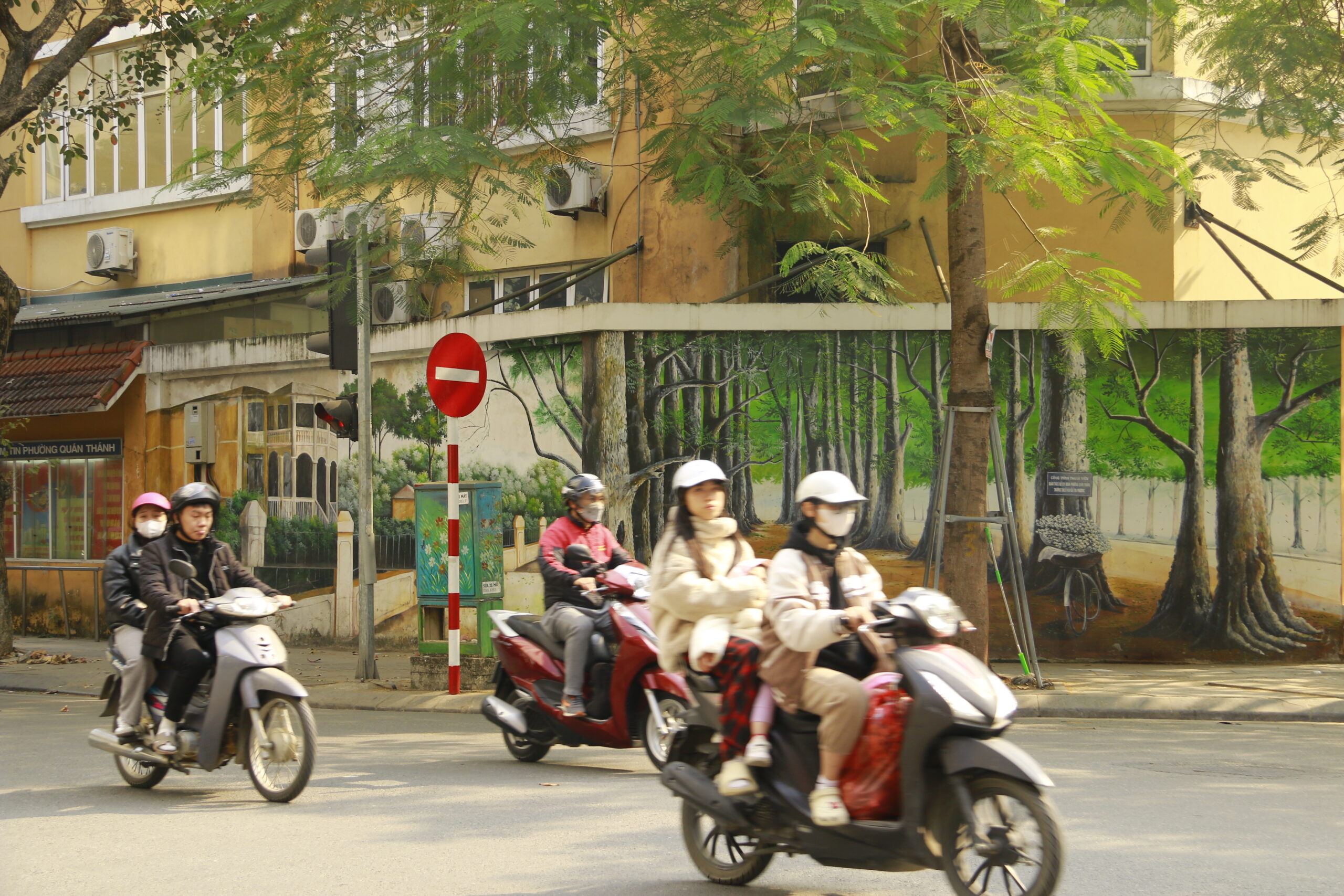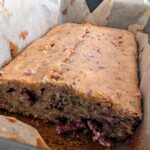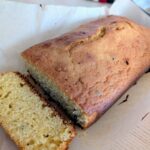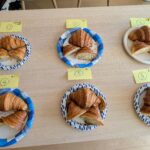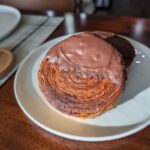Is Hanoi chaotic? Yes, it is.
Landing in Vietnam on New Year’s Eve, I was immediately struck by the chaos at some intersections without traffic lights. Pedestrians, motorcycles squeezing the vehicles, accompanied by an unending cacophony of horns, made me immediately open airline app trying to reschedule my flight for an earlier departure. Luckily, the rescheduling fee discouraged me.

Crossing the street relies on trust—trusting that the motorbikes weaving through the sea of pedestrians will avoid crashing you. Looking left and right while waiting for a traffic light will get you nowhere; just close your eyes and stride forward confidently!

In Hanoi’s Old Quarter, teeming with tourists, the sidewalks are often turned into parking lots for motorbikes, food stalls, and café’s plastic stools, leaving pedestrians no choice but to navigate the narrow streets alongside motorcycles, testing each other’s boundaries. By the end of a day spent walking around, my face was covered in dust—more effective than an exfoliating scrub! I rushed to a convenience store to buy a mask and dutifully wore it.

About 64% of Hanoi’s population owns motorbikes (11M population, 7M motorcycles), nearly one per adult. While there’s a plan to ban motorbikes by 2030, the city’s narrow streets, inaccessible to most vehicles, make motorbikes an inseparable part of daily life for Hanoians, offering unmatched convenience.

Is Hanoi fun? Most definitely.
Beyond Halong Bay, which resembles Guilin, China’s landscapes, Hanoi offers numerous historic sites and museums. Although its preservation and collections can’t compare to museums in many Chinese cities, delving into Vietnam’s accounts of prehistoric history and modern resistance wars reveals fresh perspectives and engaging narratives…The narratives of ancient history as constant defense against invader China at every dynasty brought up my interest to read about China and Vietnam’s ancient history. The narratives of modern day is basically independent, solo fight against France and America without any allies.
Hanoi’s museums excel in several ways: despite having limited resources, they focus on specific concepts, dedicating entire exhibitions to topics like the imperial examination system or the evolution of dragon motifs over time. These exhibits are accompanied by bilingual explanations in Vietnamese and English, achieving meaningful cultural exchange and communication.

How’s the food in Hanoi? Delicious, but choose wisely where to eat.
Just as certain Vietnamese pronunciations resemble Cantonese, many Vietnamese dishes bear traces of influences from Guangxi and Guangdong. Locals love noodle dishes and categorize food into “hot” and “cold”, aligning them with suitable mealtimes. Northern Vietnam values the original flavors of ingredients, much like Cantonese cuisine, while the humid and hot South leans towards spicier, stronger flavors.
Hanoi also have many lesser-known delicacies unfamiliar to tourists, such as poached duck, roasted duck, pork and wood ear mushroom rice rolls dipped in fish sauce, porridge with offal (including blood sausage and intestines), and raw pork blood soup (which I couldn’t bring myself to try). My favorite experience was feasting on an array of snails and other shellfish! Another delight was the modified mini baguettes, served warm and fluffy, dipping it in the rich salted egg yolk sauce used for snail — what an indescribable flavor bomb!


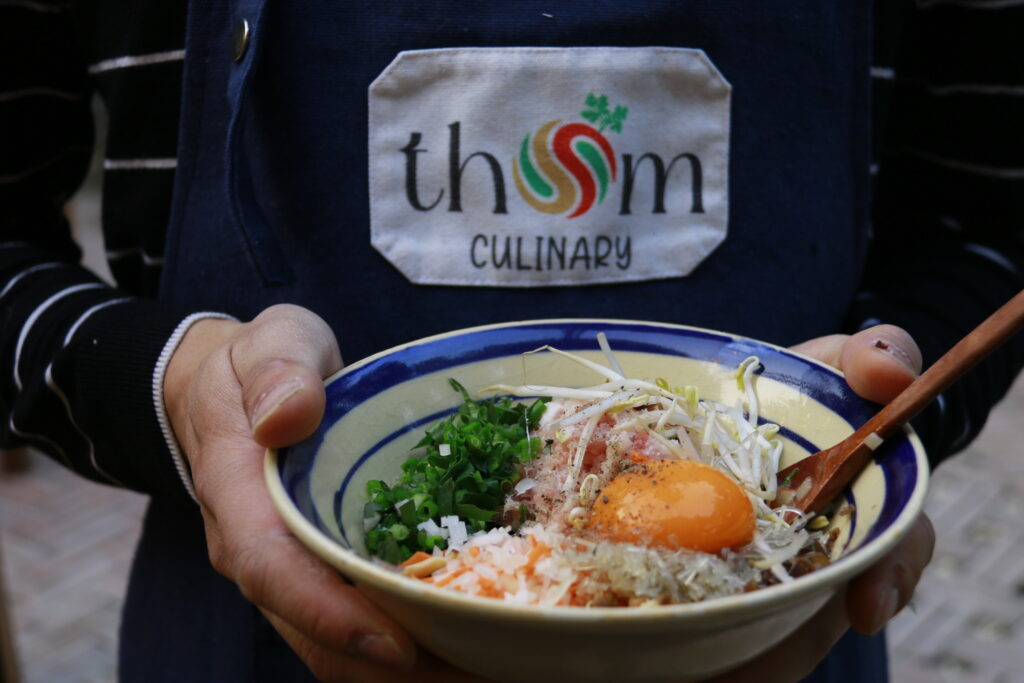
Besides taking cooking class to explore Vietnam’s food culture, we also took coffee-making classes to learn egg coffee, coconut coffee, salted cream coffee, and drip coffee. While older generations prefer intensely bitter coffee, younger Vietnamese balance the bitterness with sweet toppings. A Vietnamese chef, Mr.Giang, was once employed as the chef and baker at the French Embassy. After this work experience, he wanted to bring cream coffee to broader Vietnamese population. Among many different ingredients he tried, he ended up whipping egg yolk to develop the cream texture, using Vietnamese homemade rice wine to counter the “raw” taste of eggs. Modern day barista may also add a teaspoon of bailey to bring out the sweetness. As such, Mr.Giang created a more affordable “cream” coffee, the famous egg coffee for locals—a creative solution that became iconic. Cafe Giang even offers over egg beverages such as egg rum!
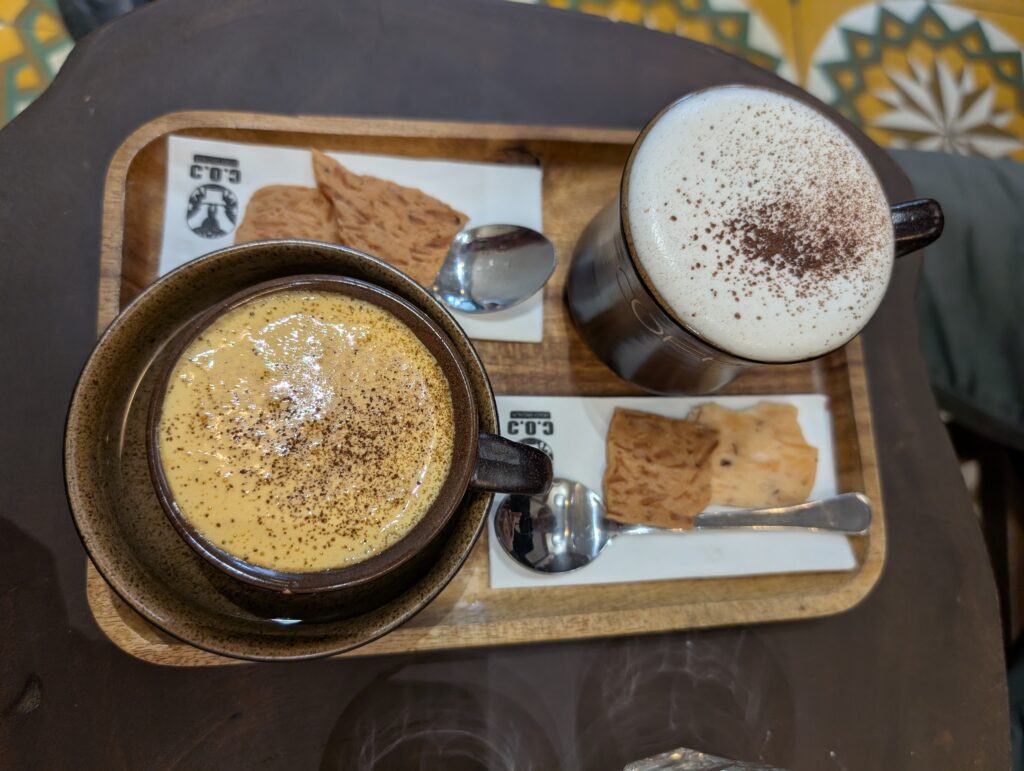

Vietnamese youth also embrace traditional clothing. Not just for photoshoots, they wear it beneath graduation gowns for grad pictures. Whether this is a longstanding tradition or a recent trend, I hope our own Chinese traditional attire, whether modernized or not, can similarly thrive and integrate into everyday life.




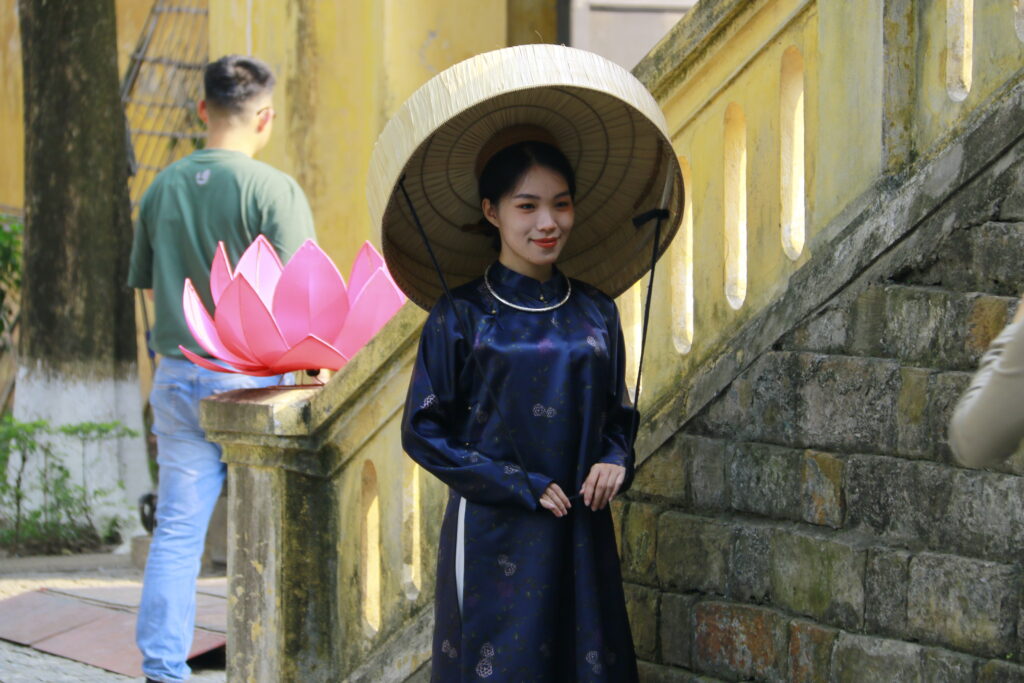
Lastly, we experienced the thrill of two soccer matches where Vietnam defeated its archrival, Thailand. The second match, held in Thailand, ended in a victory for Vietnam after a tense 90 minutes. That night, Hanoi was livelier than New Year’s Eve! The streets erupted in cheers, people banged pots and drums, lit fireworks, and paraded on motorbikes until 3 a.m.
On the day we left, the city was still in celebration mode. Hanoians lined the streets for the 50-minute drive from the city center to the airport, awaiting the return of Vietnam’s football team, hailed as heroes. The festivities continued!
My husband joked that whenever he visits a city with a football match, that city’s team always wins. I teased him, suggesting he come to China during our national team’s matches. Without hesitation, he replied, “No way, I don’t want to ruin my streak.” What a cheeky response!

河內亂嗎?亂. 落地越南是跨年夜,部分沒有紅綠燈的十字路口,擠在車旁的行人和不絕於耳的喇叭聲讓我馬上打開小程序企圖修改航班提早離開,幸好南航的改簽費勸退了我. 過馬路靠一個信任,信任人車結合的摩托車總能避開你,左顧右盼等紅綠燈是無法過馬路的,閉起眼悠閒向前衝吧!遊客眾多,道路特別狹窄的古城區的人行道是摩托車停車場和小吃攤咖啡廳的坐客區,行人只能在行車道和機動車摩托車”輪碰輪”,互相試探底線. 這樣一天走下來,我滿臉都是沙塵,比我磨砂洗臉霜還有效,趕緊去便利店買了口罩乖乖戴上. 河內64%人口擁有摩托車,幾乎成人人均一輛. 雖計畫2030禁摩,但城市大部分是機動車無法進入的狹窄街道,摩托車和它帶來的便捷早已成為河內人不可分割的一部分.


河內好玩嗎?好玩. 除了和桂林很像的下龍灣,城市內有很多古蹟和博物館. 當然保存和館藏都沒有辦法和國內很多城市的博物館相媲美,但細細去閱讀越南關於史前歷史和現代抗戰描述,會覺得角度新穎,敘述很有意思. 史前历史是每个朝代的抵抗中国入侵,可歌可泣的民族保卫战;现代历史是不联合其他国家,独立抗法抗英的自立自强. 河內的博物館做的很好的幾點,資源雖然有限,史前歷史和我們也有很多相似相同之處,但博物館可以就一個概念做一個展廳(比如解釋科舉制度或者龍圖案的設計及其意義如何隨年代推移)並確保有越南和英語雙語解釋,真正做到文化交流和傳播.

河內食物也很好吃,當然也要注意哪裡吃. 就像某些越南話的發音和粵語非常像,越南很多食物也看到兩廣地區的影子,喜歡嗦粉,對食物有寒熱之分並以此劃分宜午餐和晚餐的食物. 越南北邊追求食物原本的味道,和粵菜核心一致;南方潮濕炎熱,食物更加辛辣. 越南也有很多不為遊客熟知的食物,比如白切鴨,烤鴨,木耳豬肉腸粉沾水蟲汁,豬雜粥(內含大腸包豬血和其他內臟),生豬血湯(超出我挑戰範圍). 吃的最快樂的是各種螺和其他貝類海鮮!熱乎鬆軟的改良小法棍,沾上似乎不要錢一樣貨真價實的汁狀鹹蛋黃醬,不可言喻的美味…

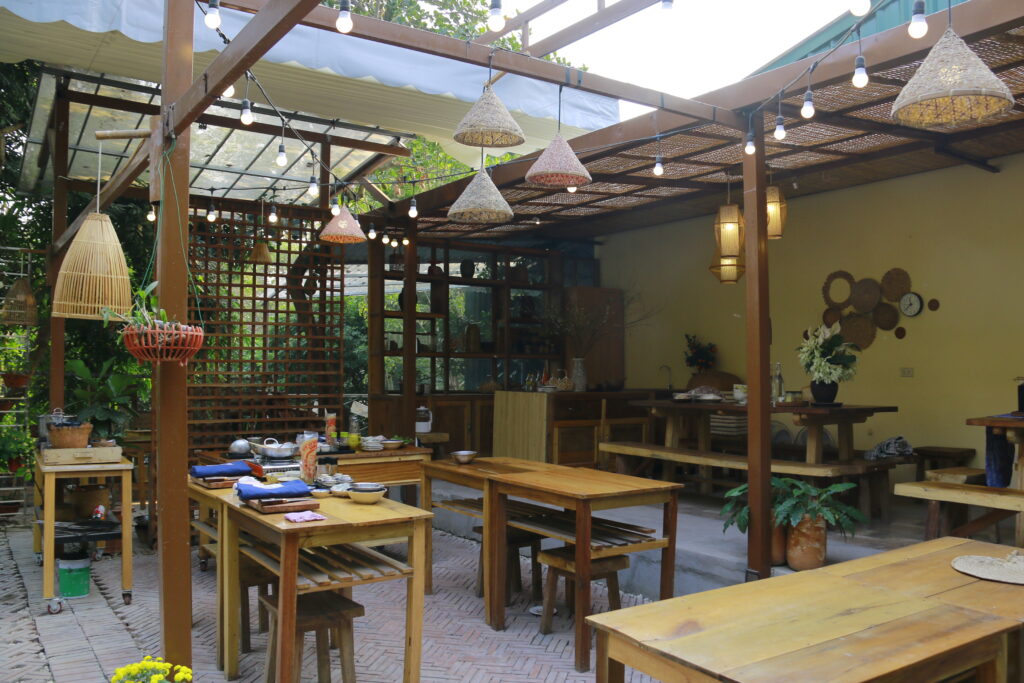

除了上烹飪課了解越南飲食,我們還上了咖啡課學做雞蛋、椰子、鹹奶油及滴漏咖啡. 越南老一輩愛喝極苦的咖啡,年輕人加上酣甜的各種“澆頭”去平衡苦咖啡. 越南出身的法國大使館前廚師為了讓越南人也喝上有奶油的咖啡,尋得價格相對低廉的雞蛋和越南米酒來做出奶蓋.
越南年輕人也很喜歡穿傳統服飾,不僅僅擺拍,也會穿在畢業袍內拍照,不知是最近興起還是長久習慣,也希望我們的傳統服裝無論改良與否也能繼續發光發熱,融入生活中去!
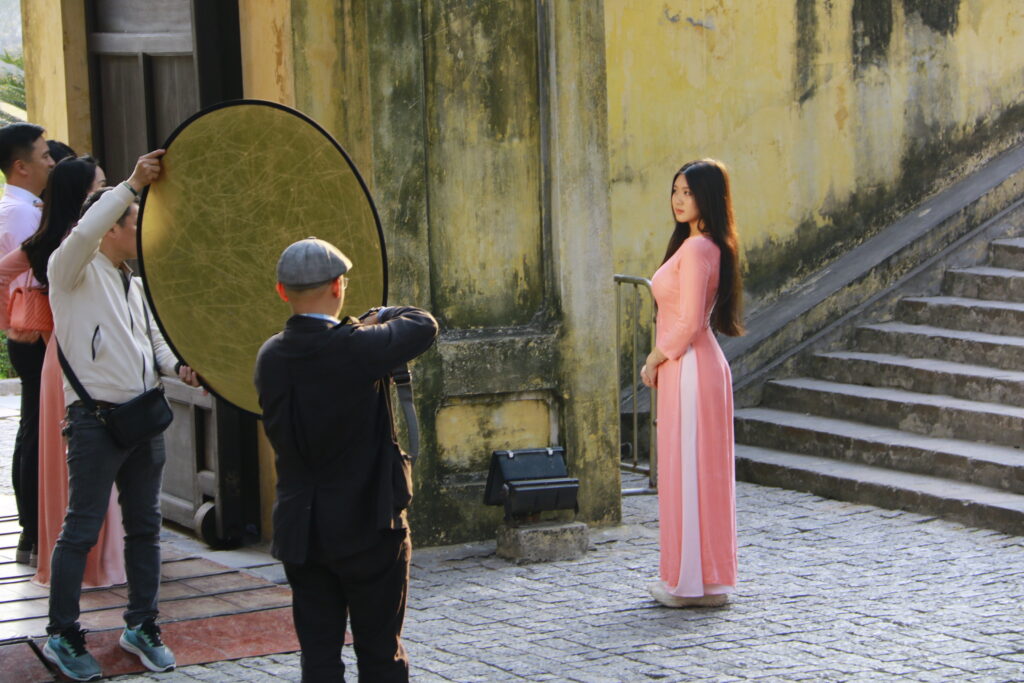


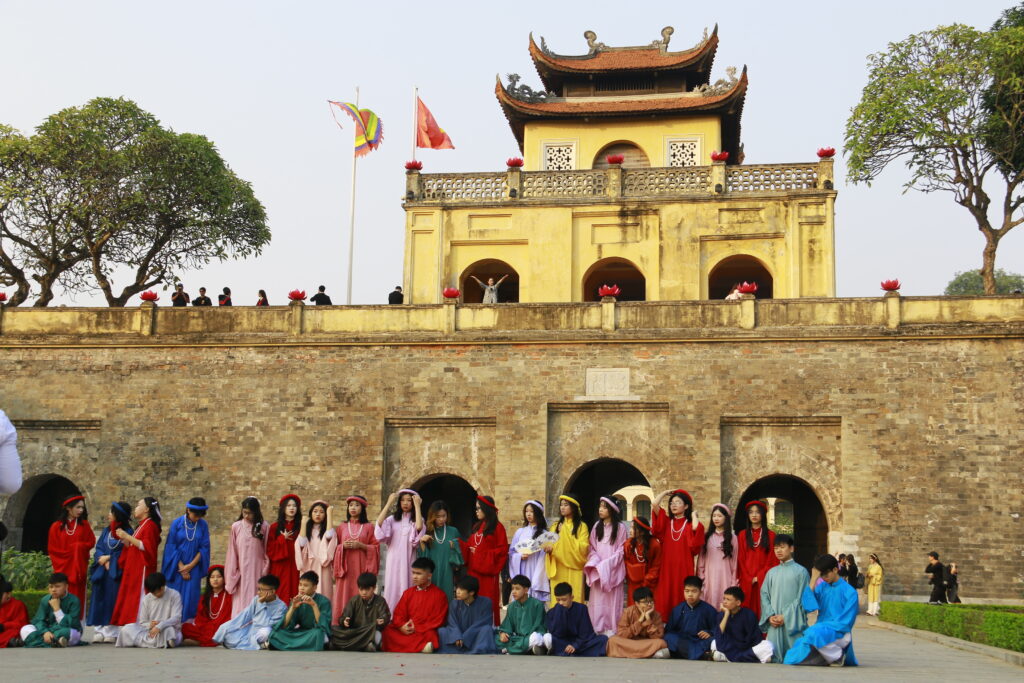
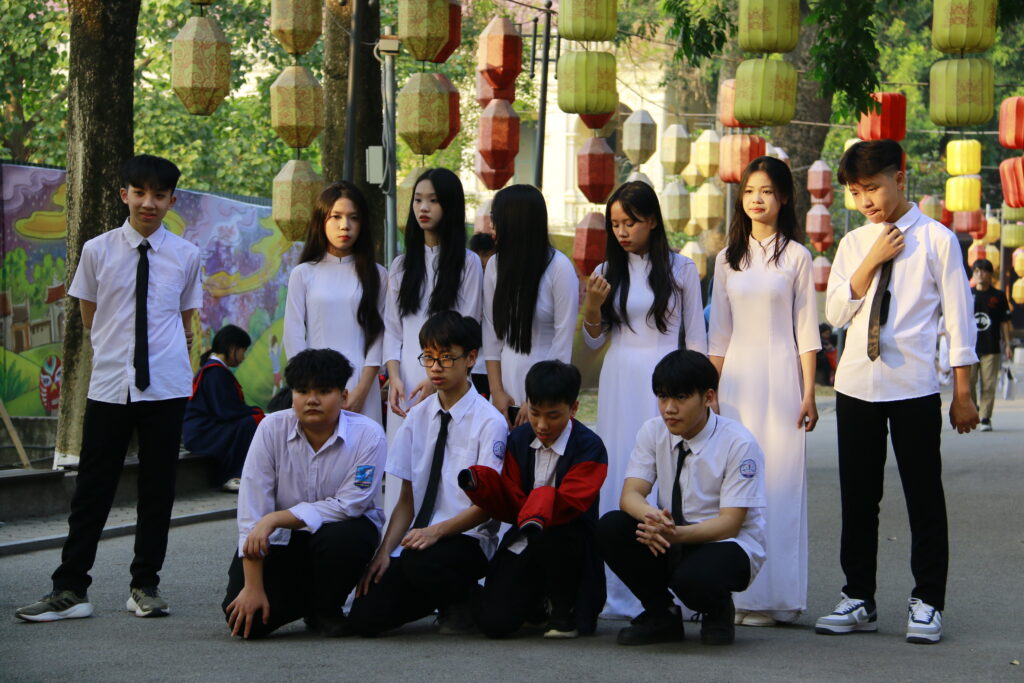
最後的最後,在河內期間,親歷兩場越南打敗死敵泰國的足球賽. 第二場在泰國主場,僵持90多分鐘後打敗泰國後,河內簡直比跨年還熱鬧!先是滿街的歡呼,人們真敲平底鍋打鼓,放煙花,接下來是持續到凌晨三點的摩托車遊行. 我們離開那天是球賽第二天,河內人積聚在城內到機場這50分鐘車程的機動車道旁,等待彷如英雄的越南足球隊榮歸祖國!繼續狂歡!老公說他每到一個城市如果有球賽,那個城市必定贏. 我笑說,那國足開打你來中國好不好?他毫不遲疑的說不要,我不要打破我的紀錄…真是不給面子

